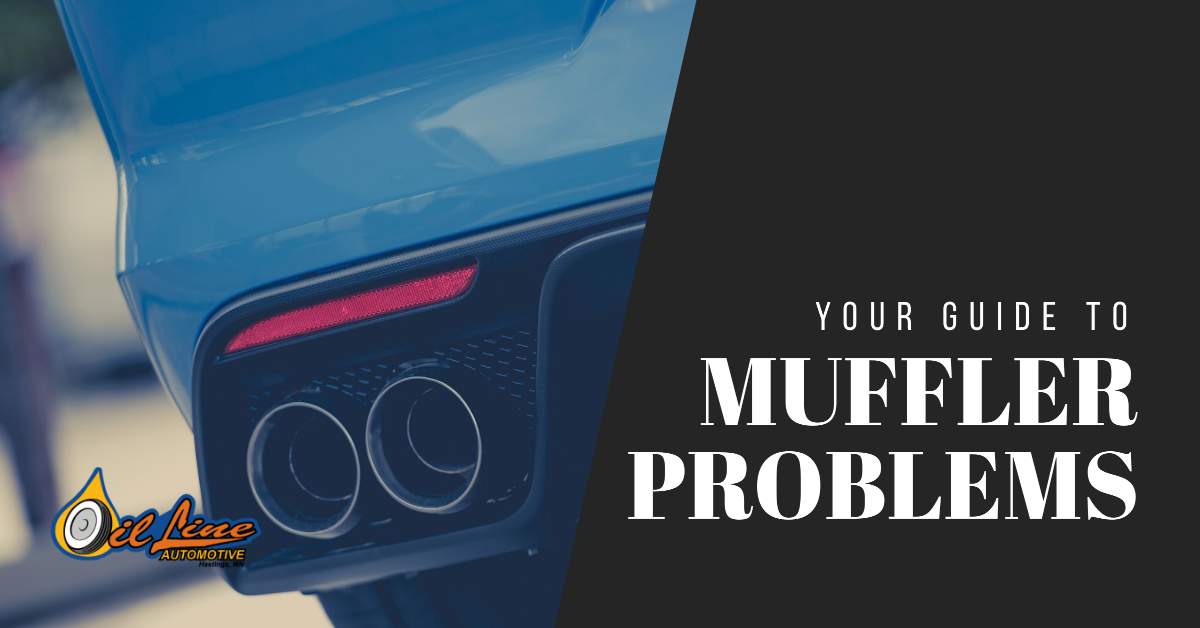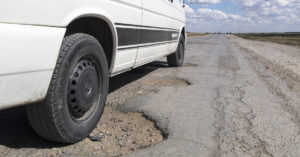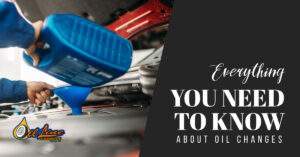The muffler is part of your car’s exhaust system, and at first glance, it might not seem like it plays a huge role in the overall functioning of your vehicle. After all, its one responsibility is to muffle the noise generated by the engine. However, the muffler also has the important role of funneling the exhaust gases out of your vehicle, and protecting the passengers from these toxic fumes. When the muffler is damaged or failing, not only is your car loud, it can also pose a danger to your health. In this article, we’re going to cover how to spot and prevent potential muffler issues.
Diagnosing a muffler problem
The first symptom you should look for is the one most noticeable – sound. If your car is suddenly louder than normal, it could mean that there is a hole in your muffler or somewhere in your exhaust system. You may also hear a rattling sound, which indicates that the connection between the muffler and the rest of the exhaust system has gotten loose. Rattling could also indicate that the muffler is cracked, and that you need to visit a mechanic soon. It’s important to be expedient in these situations, since if they are left untreated, these issues could spread and lead to more expensive repairs. And speaking of expensive consequences, you might also have to worry about a ticket for excessive noise in certain counties.
However, muffler issues are not strictly detectable by sound. Sometimes, the muffler will sound just fine, but there will be other signs indicating problems, and these signs are visible. You may notice drops of water coming out of the exhaust pipe when you start your car up, and this is normal condensation caused by the heating and cooling of the muffler. However, this can become a problem when the water is not drained. Over time, this extra water will rust the muffler and lead to damage. A sign that this is happening is a larger than normal amount of water coming out of the exhaust pipe when you start the car up. Rust may also become visible on the outside of the muffler, and this is often caused by large quantities of salt during the winter. Catching either of these problems early on and visiting a mechanic can greatly reduce the risk of needing extensive muffler repairs.
The third sign that you may be having muffler issues will show up on your car’s dashboard. The muffler is an important part of a vehicle’s exhaust system, and as such it has an impact on its performance. As rust affects more and more of your muffler, it will start to damage its internal chambers, blocking the flow of exhaust. With time, this will start to affect fuel economy, by forcing the engine to rev harder in order to burn and exhaust fuel. On top of that, this blockage can lead to the engine overheating extending the damage to other components.
How to prevent muffler damage
So how do we prevent muffler damage? To start, we have to prevent rust from corroding the muffler from the outside in. Try to park your vehicle in dry locations, so that your undercarriage can dry off more easily. When parking in wet and snowy climates, the humidity beneath your car will keep the muffler wet, speeding up the rusting process. You can also clean your undercarriage regularly using a pressure washer to remove salt from the muffler and the rest of your exhaust system. You might even be near an automatic car wash that has an undercarriage wash setting.
While a malfunctioning muffler can reduce the performance of an engine, engine problems can also lead to muffler damage. For example, if your engine causes excessive smoke, it will release high levels of nitrous oxides, hydrocarbons, and other damaging compounds that can be corrosive. If you notice black smoke, it means that your engine is not burning fuel effectively, while blue smoke indicates burning oil. Heavy, white smoke can be a sign that you have a coolant leak. Each of these signs can help you diagnose engine issues, which need to be addressed right away, and a visit to the mechanic will not only prevent further engine damage, but also reduce the risk of your muffler deteriorating.
You also want to protect your muffler from the blunt force damage that can be caused by rough terrain. The muffler is found in one of the lowest spots in your car, so it will be the first hit if you run over a pothole or don’t slow down for a speed bump. It is after all composed of a thin layer of metal. When it comes to speed bumps, you can either avoid them altogether, or go over them at a safe speed, and make sure to avoid any objects you see on the road. Concrete parking curbs can also be an issue, often having the same height as a vehicle’s tailpipe. The best solution here is to park facing these curbs, so you don’t accidentally bump into them. Finally, you want to check for any issues with the exhaust mounts that hold the muffler in place. These mounts are often made out of rubber, which exhausts or tears over time, lowering your muffler closer to the road. If they are replaced on time, you can avoid having to repair or replace the muffler.
Have you noticed any issues with your muffler?
Muffler problems can extend over time, leading to damage to other parts of your vehicle. Not only that, but you may also have noise issues, odor in your car, and in the worst case scenario, health issues from toxic fumes entering your vehicle. It’s best to prevent these issues or identify them early on so they can be quickly and cheaply fixed. If you notice any of the symptoms mentioned above, contact us today. We will take a look at your muffler and recommend the best course of action going forward.




